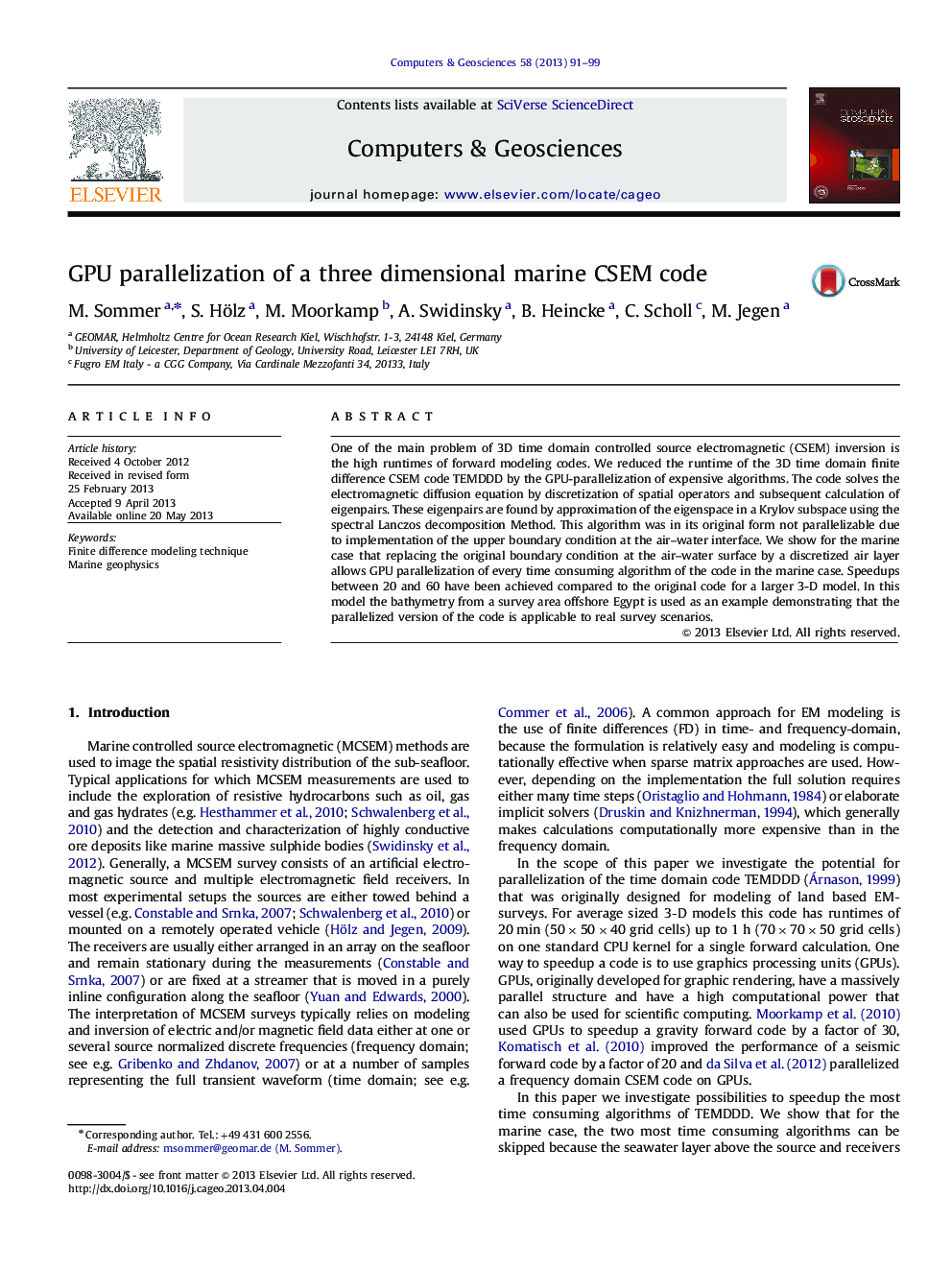| Article ID | Journal | Published Year | Pages | File Type |
|---|---|---|---|---|
| 507748 | Computers & Geosciences | 2013 | 9 Pages |
•We introduce the code TEMDDD for 3D EM-modeling of geophysical problems.•Algorithms runtimes are profiled and its potential for parallelization is examined.•Gridding of an air layer as a boundary condition for the marine case is investigated.•We parallelized the code on a graphics processor (GPU) to reduce runtime.•The new code is applied to investigate the effect of bathymetry on a real dataset.
One of the main problem of 3D time domain controlled source electromagnetic (CSEM) inversion is the high runtimes of forward modeling codes. We reduced the runtime of the 3D time domain finite difference CSEM code TEMDDD by the GPU-parallelization of expensive algorithms. The code solves the electromagnetic diffusion equation by discretization of spatial operators and subsequent calculation of eigenpairs. These eigenpairs are found by approximation of the eigenspace in a Krylov subspace using the spectral Lanczos decomposition Method. This algorithm was in its original form not parallelizable due to implementation of the upper boundary condition at the air–water interface. We show for the marine case that replacing the original boundary condition at the air–water surface by a discretized air layer allows GPU parallelization of every time consuming algorithm of the code in the marine case. Speedups between 20 and 60 have been achieved compared to the original code for a larger 3-D model. In this model the bathymetry from a survey area offshore Egypt is used as an example demonstrating that the parallelized version of the code is applicable to real survey scenarios.
